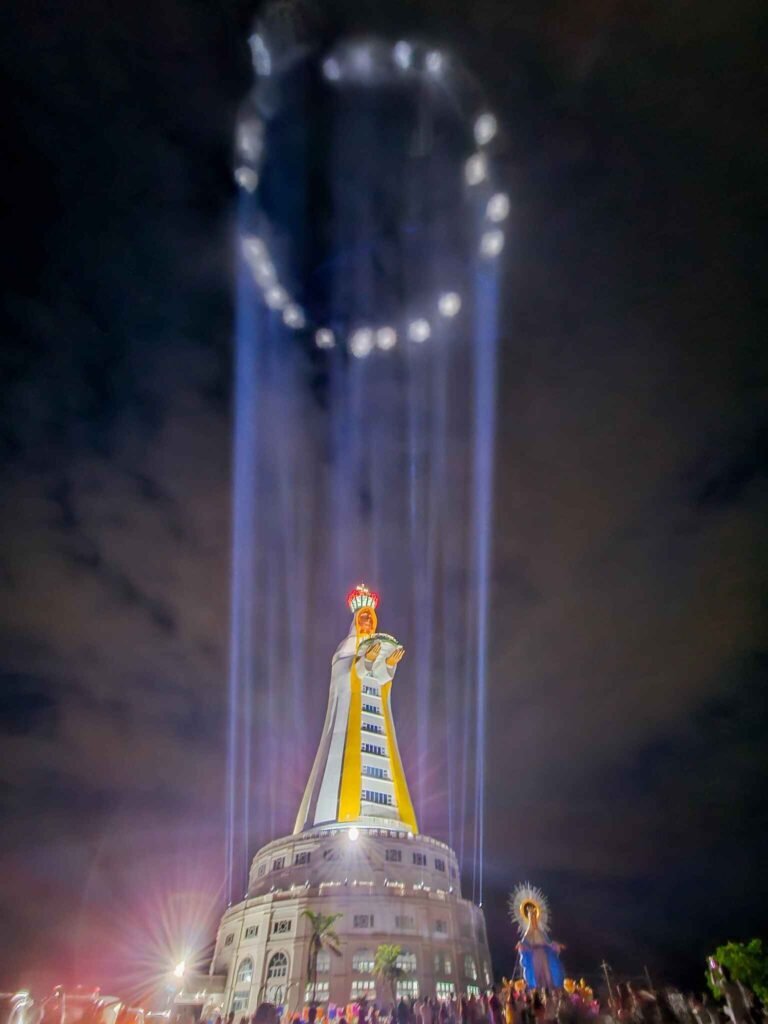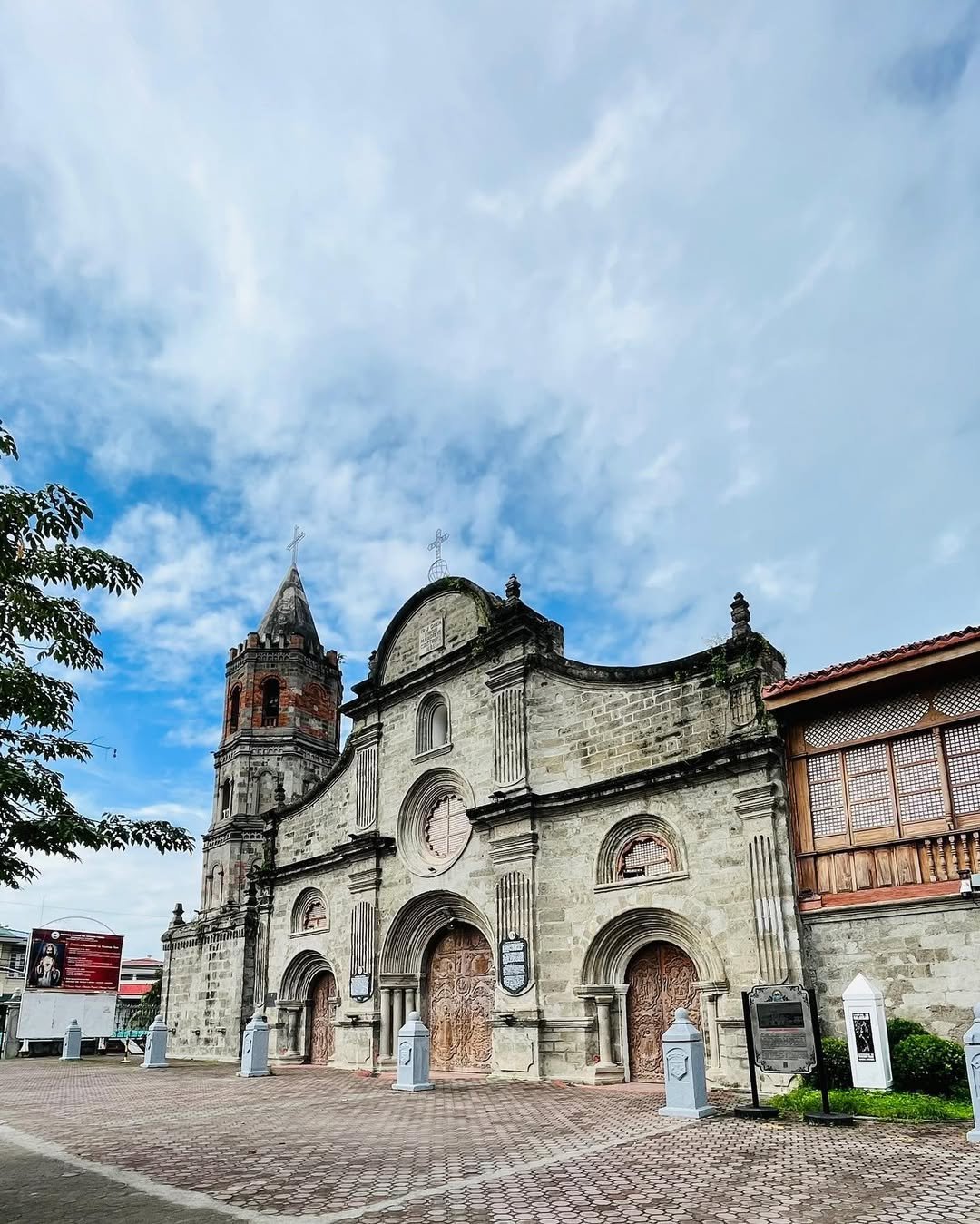
Introduction to Barasoain Church: Where History and Faith Converge
Barasoain Church, officially known as Our Lady of Mount Carmel Parish, is not just a religious landmark but an iconic beacon of Philippine history nestled in Malolos, Bulacan. This historical gem famously dubbed the “Cradle of Democracy in the East,” continues to captivate both pilgrims and history buffs who journey here, eager to stand where pivotal moments in the country’s struggle for independence took place.
Stepping inside the magnificent stone façade of Barasoain Church Malolos Bulacan, visitors immediately sense the powerful blend of history and spirituality. One can almost feel the weight of the past, imagining the fervent debates and impassioned speeches that echoed within these walls during the First Philippine Congress. From the drafting of Asia’s first democratic constitution—the Malolos Constitution—to the inauguration of the First Philippine Republic in 1899, this church witnessed milestones that altered the course of Philippine history forever.
When visitors enter Barasoain Church, there’s an overwhelming feeling of reverence and nostalgia—truly a place where time stands still. Beyond its remarkable history, the serene atmosphere, illuminated by softly filtered sunlight through stained-glass windows, offers a peaceful retreat from bustling city life. It’s easy to lose track of time admiring historical artifacts or quietly observing a mass.
For travelers planning a visit, capturing striking Barasoain Church photos is best done in the early morning or late afternoon when the natural light enhances its Neo-classical Baroque façade. This insider tip ensures memorable images free from harsh shadows and bustling crowds.
Practicality-wise, knowing the Barasoain Church mass schedule 2025 beforehand can greatly enhance a visitor’s experience. Attending mass is an immersive way to connect with local spirituality, but if the intent is sightseeing, avoiding peak mass hours—particularly Sunday mornings—allows for quieter exploration and photography.
With its accessibility just under an hour’s drive from Manila, visitors often wonder how to go to Barasoain Church efficiently. Opting for a weekday trip and utilizing private transportation or direct UV Express vans from Metro Manila can significantly reduce travel time, ensuring more relaxed touring.
Ultimately, a trip to Barasoain Church is about more than admiring architecture or ticking off historical facts—it’s about stepping back in time to a place that shaped a nation’s identity.
Table of Contents
Getting to Know Barasoain Church
History of Barasoain Church: Why It Matters
Located in the heart of Malolos, Bulacan, Barasoain Church—formally known as Our Lady of Mount Carmel Parish—holds a place of unmatched importance in Philippine history. It’s more than just a church; it’s a cornerstone of national identity, a sacred ground where religion, revolution, and republic came together to shape a nation.
Why Is Barasoain Church a Historical Place?
Barasoain Church is recognized as one of the most significant historical sites in the Philippines for its pivotal role in the country’s fight for independence. It’s often referred to as the “Cradle of Democracy in the East” for good reason:
It was the site of the First Philippine Congress, which convened here on September 15, 1898.
It was where the Malolos Constitution was drafted and ratified, laying the foundation for a democratic system of government.
Most importantly, Barasoain Church became the birthplace of the First Philippine Republic, inaugurated on January 23, 1899, with General Emilio Aguinaldo as President.
This church isn’t just a footnote in history books—it is the very location where Filipino leaders envisioned and launched the country’s first independent government. That makes Barasoain Church Malolos Bulacan a must-visit for anyone seeking to understand the nation’s roots.
Why Barasoain Church Is Famous
Barasoain Church is famous not only for its historical milestones but also for its unique place in Filipino culture:
It once appeared on the ₱10 Philippine banknote, reinforcing its symbolic value.
The Neo-classical Baroque architecture, with its massive stone walls and symmetrical bell tower, is iconic.
It is home to the Barasoain Church and Museum, where priceless artifacts, documents, and replicas narrate the struggle for independence.
Its reputation isn’t limited to historians or devout Catholics—Barasoain Church photos frequently appear in national publications, student textbooks, and travel guides, testifying to its cultural and visual appeal.
Facts About Barasoain Church
Here are some key facts that travelers and history buffs alike will appreciate:
Founded: 1859 by Augustinian missionaries
Rebuilt: 1885–1888 after a fire destroyed the original structure in 1884
Style: Neo-classical Baroque façade with a rich, symmetrical design
Historical Role: Venue of the Malolos Congress, site of the First Philippine Republic
Current Use: An active parish and museum visited by thousands annually
Each stone in its walls carries the echoes of revolutionaries, clergy, and citizens who once gathered here to lay the foundation for a free Filipino nation.
A Personal Glimpse Inside Barasoain Church and Museum
Visiting Barasoain Church and Museum offers a surreal, almost cinematic, glimpse into the nation’s past. One standout exhibit is the facsimile of the Malolos Constitution, displayed under warm lights in the second-floor gallery of the museum. Reading the carefully preserved pages and seeing the names of the original signatories felt profoundly humbling.
Another memorable artifact is the replica of Aguinaldo’s presidential seat used during the inauguration of the First Republic. For anyone passionate about history, standing before this exhibit stirs a sense of awe—this isn’t just a replica; it’s a portal to the nation’s very first steps toward democracy.
One practical tip: the museum’s second floor is only accessible by stairs, so plan accordingly if traveling with elderly companions. Quiet afternoons on weekdays are ideal for absorbing the exhibits without distraction—something every visitor who values depth and reflection will appreciate.
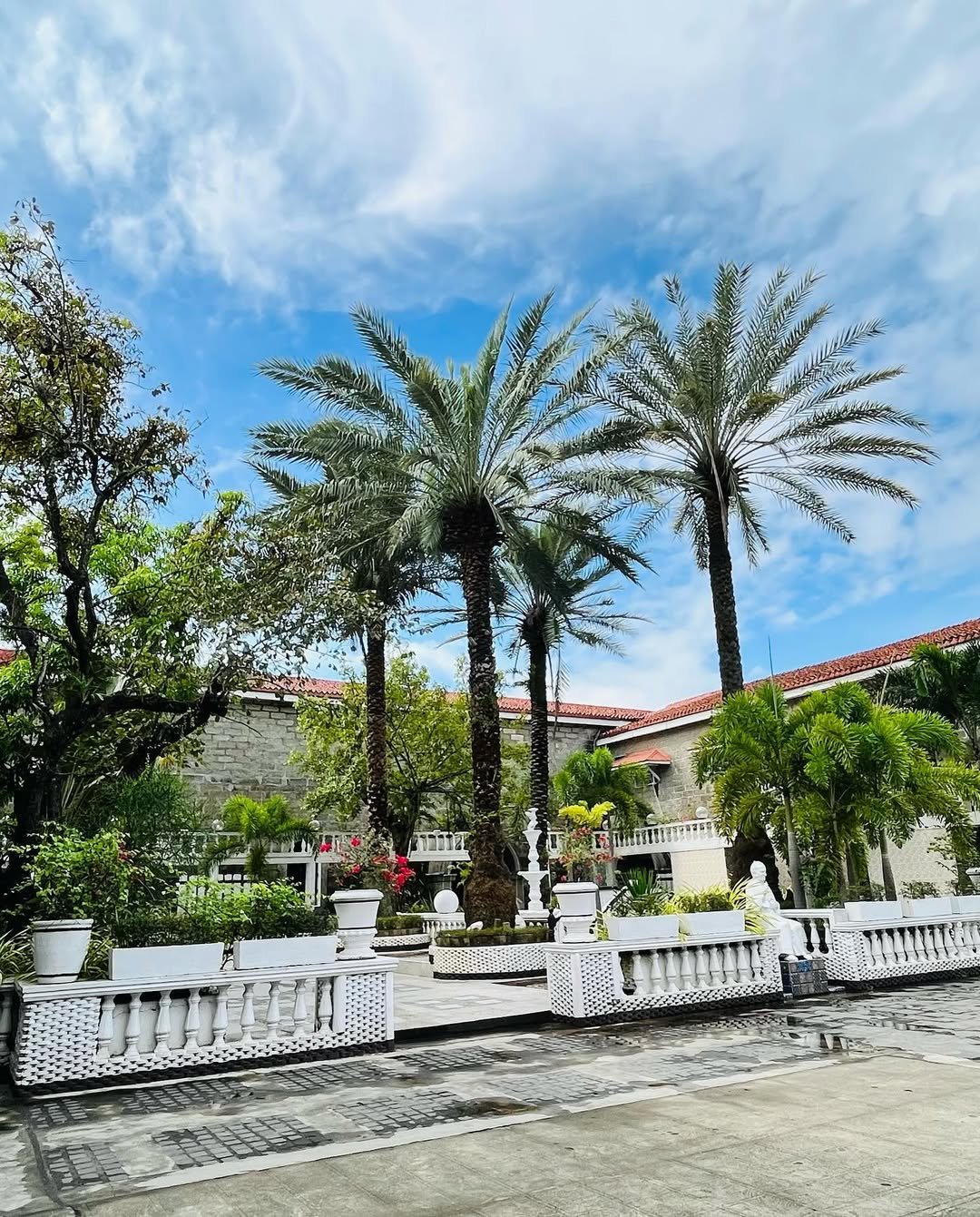
How to Go to Barasoain Church
Location of Barasoain Church
Barasoain Church is located along Paseo del Congreso Street, Barangay San Gabriel, Malolos City, Bulacan, just a few minutes from the city center. For travelers asking “How to go to Barasoain Church?”, it’s conveniently situated about 42 kilometers north of Metro Manila, making it a perfect day trip destination for both local and international visitors.
The location of Barasoain Church is highly accessible via multiple routes, whether you’re traveling by public transportation or private car. With the right timing and planning, reaching this iconic landmark is relatively straightforward and budget-friendly.
Getting to Barasoain Church by Public Transportation
If you’re commuting from Metro Manila, there are several cost-effective ways to get to Barasoain Church Malolos Bulacan:
1. Bus from Manila
Where to ride: Head to Baliwag Transit or Five Star bus terminals in Cubao or Pasay.
Route: Look for buses with Malolos Crossing or Malolos Bayan signage.
Fare: Ranges from ₱80 to ₱150, depending on terminal and bus type.
Drop-off point: Alight at Malolos Bayan or Crossing, near the provincial capitol.
Final leg: From the drop-off, take a tricycle to Barasoain Church for ₱20–₱50.
Pro Tip: Ask the conductor to let you off nearest to Paseo del Congreso. Locals are familiar with Barasoain, so don’t hesitate to ask.
2. UV Express or P2P Van
Origin: Vans or P2P buses to Malolos are available at SM North, Trinoma, and select terminals in Monumento.
Fare: Around ₱100–₱180, with fewer stops than regular buses.
Convenience: This is a more comfortable and time-efficient option, especially for first-time visitors.
3. From Malolos Town Proper
Once in Malolos:
Take a jeepney or tricycle going toward San Gabriel or Paombong and ask to be dropped at Barasoain Church.
Travel time from town proper is 5–10 minutes.
Driving to Barasoain Church by Private Vehicle
Driving to Barasoain is the most flexible option, especially for groups or those with seniors or kids in tow.
1. Via North Luzon Expressway (NLEX)
Route: From Manila, take NLEX and exit at Tabang or Sta. Rita.
From Exit: Follow signs to Malolos City Proper. Once near the city center, ask locals or use Google Maps to find Paseo del Congreso.
Landmarks to watch for: Bulacan Capitol, Malolos Cathedral, and McDonald’s Malolos Crossing.
2. Parking Tips
Barasoain Church has limited parking right in front of the plaza.
Overflow parking is available nearby along side streets or near schools and barangay halls.
Fee: Informal parking fees of ₱30–₱50 may apply.
Driving Tip: Avoid rush hours (7:00–9:00 AM, 4:30–6:30 PM). For smoother travel, depart Manila before 6:30 AM and head back before evening traffic builds up.
First-Time Visitor Tips: Safety, Budget, and Best Travel Times
Best Time to Travel
Weekdays: Less crowded, ideal for sightseeing and photography.
Sundays: Expect large crowds due to multiple Masses—best if you’re attending the Barasoain Church Mass Schedule 2025.
Mornings (7:00–9:00 AM) and late afternoons (4:00–5:30 PM) offer the best light for photos and cooler temperatures.
Budget Tips
Total commute from Manila to Barasoain can cost under ₱250 round-trip via public transport.
Bring small bills and coins for jeepneys, tricycles, or parking fees.
Visiting the Barasoain Church and Museum only costs ₱20–₱30, making this one of the most affordable cultural trips from the capital.
Safety Tips
Be alert around busy streets—crosswalks are minimal near the church.
Secure your belongings when riding crowded buses or vans.
Bring your own water, as convenience stores may be a few blocks away from the site.
Final Thoughts: Navigating with Ease
Whether you’re a solo traveler seeking a historical pilgrimage or a family exploring facts about Barasoain Church, getting to this iconic site is relatively easy with a bit of planning. Use apps like Google Maps or Waze, search for “Barasoain Church location”, and you’ll be guided directly to the heart of the First Philippine Republic’s birthplace.
Pro tip: If you’re visiting nearby attractions such as Casa Real or the Malolos Cathedral, consider hiring a local guide or tricycle for a half-day heritage tour around town—efficient, immersive, and insightful.
In short, how to go to Barasoain Church isn’t a question of difficulty, but one of timing and preference. With the options above, travelers of all types can experience this monumental site with ease and comfort.
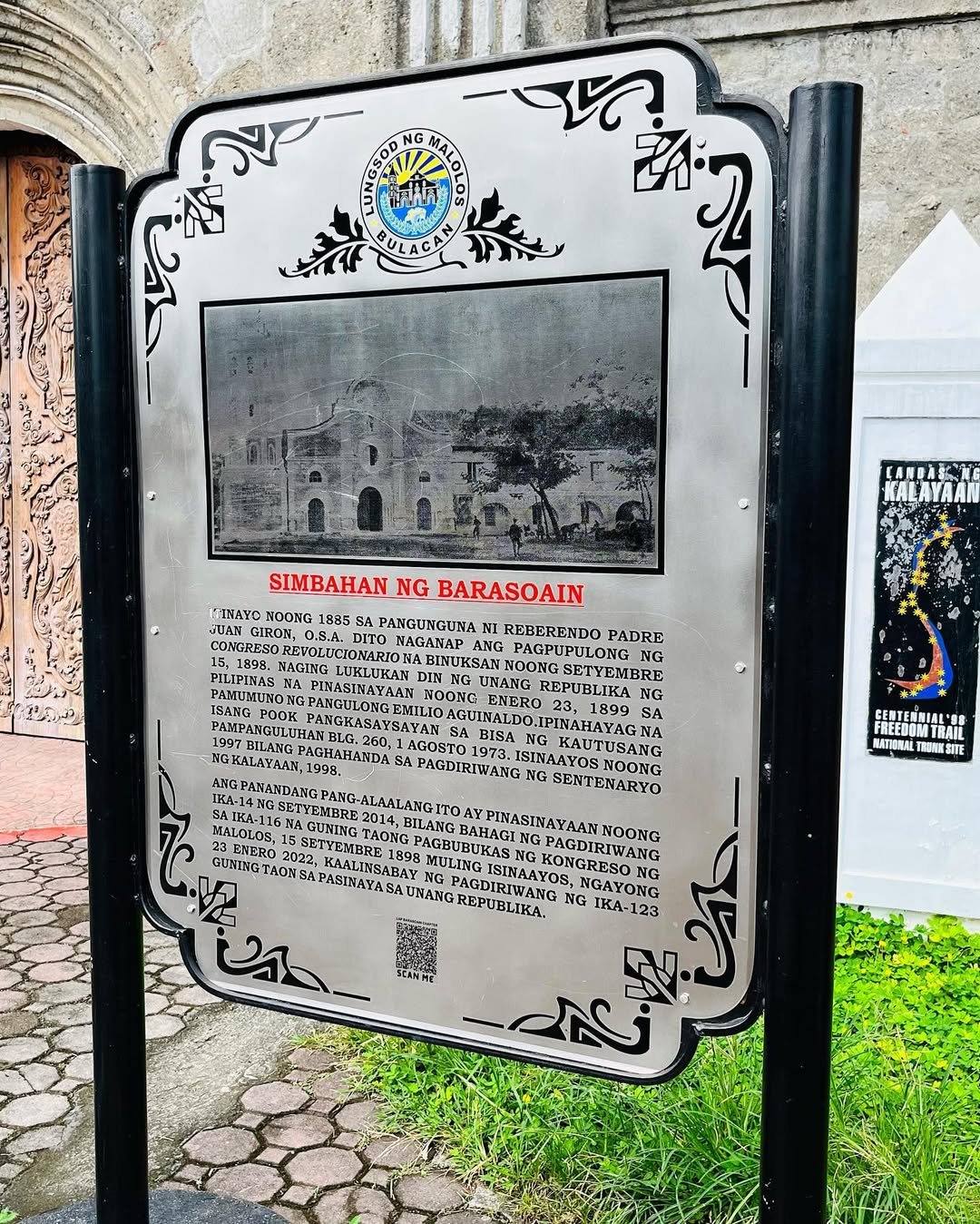
Visiting Barasoain Church: Practical Information
Barasoain Church Mass Schedule 2025
Whether you’re a pilgrim, a heritage traveler, or simply someone looking for spiritual quietude, attending a mass at Barasoain Church can be a moving experience. As an active parish under the Diocese of Malolos, Our Lady of Mount Carmel Parish celebrates regular daily and weekend Masses open to the public.
Daily Masses (Monday to Friday)
6:00 AM – Morning Mass
6:00 PM – Evening Mass
First Friday Devotion: An additional 5:00 AM Mass is held every first Friday of the month in honor of the Sacred Heart of Jesus.
Saturday Masses
6:00 AM – Regular morning Mass
6:00 PM – Anticipated Sunday Mass
Sunday Masses
Barasoain Church is busiest on Sundays, offering multiple services throughout the day to accommodate parishioners and visitors:
6:00 AM
7:30 AM
8:45 AM
10:00 AM
11:15 AM
5:00 PM
6:15 PM
Note: Mass times may change depending on special liturgical occasions. For updated Barasoain Church mass schedule 2025, it’s best to check the parish’s official Facebook page or contact the church directly.
Special Masses and Religious Celebrations
In addition to the regular schedule, Barasoain Church holds special services during key feast days and national holidays:
January 23: Araw ng Republikang Filipino – commemorative Mass and civic ceremonies marking the First Philippine Republic.
July 16: Feast of Our Lady of Mount Carmel, the parish’s patroness.
Holy Week and Simbang Gabi (Christmas Novena Masses): Expect changes in timing and larger crowds.
These occasions draw large congregations, so arriving early is recommended if you plan to attend.
Insider Tip: When to Attend Mass for a Quiet Experience
For a more reflective, less crowded mass, consider:
Weekday mornings (especially Tuesday–Thursday around 6:00 AM)
Saturday morning Mass at 6:00 AM
Late afternoon Sunday Mass (5:00 PM or 6:15 PM), when the earlier rush has subsided
These times offer a peaceful setting where the historic ambiance of Barasoain Church Malolos Bulacan can truly be appreciated.
Entrance Fees and Operating Hours
Church Entry
Good news for all visitors—entrance to Barasoain Church is free. As an active house of worship, it welcomes pilgrims and tourists alike without admission charges. Visitors are, however, encouraged to donate voluntarily to help with the church’s upkeep. Donation boxes are placed discreetly near the doorways and altar.
When entering, remember this is a sacred space. Whether you’re attending mass or taking in the church’s architectural beauty, always maintain a respectful tone and dress appropriately.
Church Operating Hours
Open daily: 6:00 AM to 7:00 PM
Visitors may enter freely between Mass times, but avoid disturbing ongoing services.
Best time for photography and quiet exploration: Mid-morning on weekdays, or just before the evening mass.
Barasoain Church and Museum Entry
Adjacent to the church is the Museo ng Republika ng 1899, a historical museum housed in the old convent. This museum features galleries dedicated to:
The Malolos Congress
The First Philippine Republic
Replicas of important documents such as the Malolos Constitution
Antique furniture and exhibits related to the church’s revolutionary past
Museum Hours
Tuesday to Sunday: 8:00 AM – 4:00 PM
Closed on Mondays
Entrance Fee for the Museum
₱20 per person (approx. $0.35 USD)
Discounts may be available for students, seniors, or large groups upon request.
Tickets are purchased at the museum entrance.
Pro Tip for Museum Visitors
The museum’s second floor is accessible only via stairs. If you’re visiting with seniors or persons with mobility challenges, inquire in advance for special assistance or alternative arrangements.
Visiting Barasoain Church and Museum isn’t just a chance to see a building—it’s an opportunity to walk the very halls where Philippine democracy took root. Whether you join a morning mass or explore the gallery rooms of the museum, the site offers both spiritual reflection and a deep sense of national pride—all at a remarkably low cost.

Inside Barasoain Church
Our Lady of Mount Carmel Parish: Spiritual Insights
Barasoain Church, also known as Our Lady of Mount Carmel Parish, offers more than just a history lesson—it invites every visitor to pause, reflect, and reconnect. During my visit, I attended the early morning weekday mass at 6:00 AM. The moment I stepped inside the church, I was struck by a deep sense of reverence. The soft chanting of the choir, the gentle flicker of candlelight, and the aroma of incense created an atmosphere both sacred and serene.
There’s something powerful about hearing the liturgy echo through a space that once witnessed the birth of a republic. For me, the spiritual experience was heightened by the realization that these same walls had once echoed the voices of revolutionaries dreaming of freedom. It felt grounding and humbling—like standing on holy and historic ground all at once.
Notable Interior Features
1. The Altar and Retablo
The altar, with its intricate retablo (altarpiece), is the church’s visual and spiritual centerpiece. Gilded with gold-leaf accents and carved with ornate floral motifs, the retablo frames the image of Our Lady of Mount Carmel. Statues of saints, candles, and an arched tabernacle surround the space, enhancing the solemnity of the sanctuary.
2. Historical Artifacts
Inside the church, you’ll also find elements preserved from earlier centuries—a baptismal font, antique pews, and a commemorative plaque marking the inauguration of the First Philippine Republic. These details make it easy to reflect on the dual role of the building as both house of worship and revolutionary hall.
Photography Etiquette for Barasoain Church Photos
Barasoain Church is one of the most photogenic landmarks in the Philippines, but photography should be done with respect, especially when services are ongoing. Here are a few tips for visitors:
Avoid flash photography, especially inside the church and during mass.
Take wide-angle shots of the altar when the space is empty—ideally after morning mass or mid-afternoon on weekdays.
Capture exterior shots in the golden hours (7:00–9:00 AM or 4:00–5:30 PM) when natural lighting enhances the church’s Neo-classical Baroque façade.
Do not photograph worshippers or events without permission.
Respectful photography allows travelers to preserve memories while honoring the sanctity of the site. For social media or blog content, using the phrase “Barasoain Church photos” naturally draws interest from readers planning a visit.
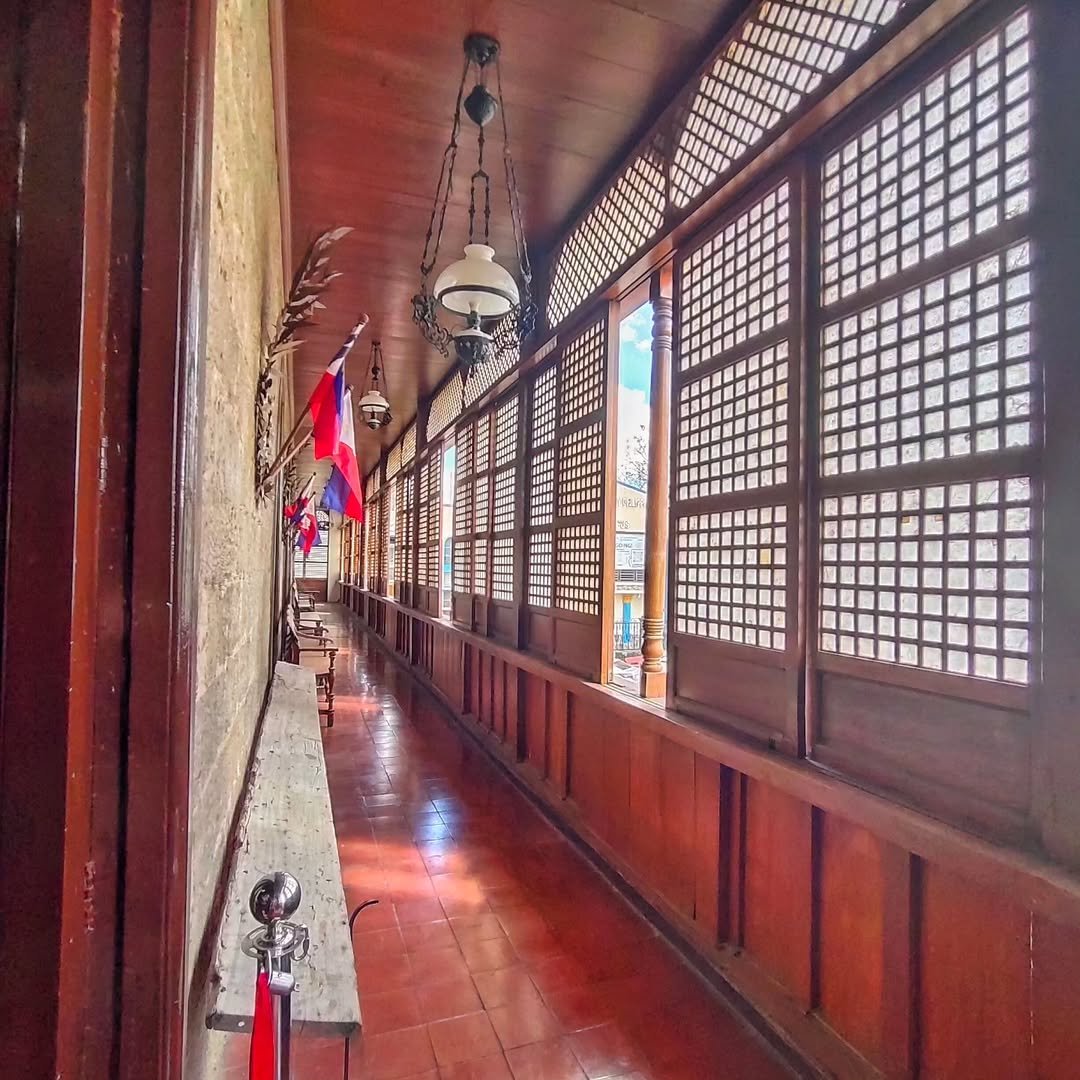
Exploring the Barasoain Church Museum
Just a few steps from the church itself lies the Museo ng Republika ng 1899, housed within the old convent. This museum serves as a gateway to the deeper political history of the site and is an essential stop for any first-time visitor.
Key Exhibits and Artifacts
Malolos Constitution Display: A replica of the actual document, accompanied by information on how it shaped the First Philippine Republic.
El Heraldo de la Revolución: A reprint of the official revolutionary newspaper, offering insights into the nationalist movement.
Presidential Seat Replica: A highlight of the museum is a replica of the seat used by General Emilio Aguinaldo during the First Republic’s inauguration.
Historical Dioramas: These scale models provide visual storytelling of major events, including the Malolos Congress and local uprisings.
Gallery of Filipino Patriots: Portraits and biographies of delegates and revolutionaries, adding human stories to the grand narrative.
The museum does an excellent job blending visual, textual, and interactive elements, which helps visitors—especially students and foreign tourists—understand the significance of Barasoain’s role in Philippine independence.
Practical Visitor Advice
1. Best Time to Visit the Museum
Weekday mornings (8:00 AM – 10:00 AM) are ideal for a peaceful walkthrough, free from school field trips or weekend crowds.
Avoid Mondays—the museum is closed.
If you prefer guided tours, arrive before lunch, as museum staff are more available to accommodate questions before the midday break.
2. Accessibility Tips
The museum is housed in a two-story convent, and unfortunately, the upper floors are accessible only by stairs.
There are no elevators or ramps, so senior citizens and visitors with limited mobility may find the second-floor galleries challenging.
If you or someone in your group requires assistance, ask the museum staff if a summary tour or ground-floor materials can be provided.
3. Other Essentials
Entry Fee: A nominal ₱20 per person
Opening Hours: 8:00 AM to 4:00 PM, Tuesday to Sunday
Camera Use: Photography without flash is allowed in most parts of the museum, though it’s best to confirm at the entrance.
Visiting Barasoain Church and Museum offers a rare blend of spiritual nourishment and historical awakening. Whether you’re marveling at the sacred altar of Our Lady of Mount Carmel, studying the inked signatures of revolutionaries, or quietly absorbing the museum’s solemn dioramas, this destination delivers a layered and meaningful experience that goes far beyond typical sightseeing.
For those asking what to expect inside, know this: every brick, bench, and artifact in Barasoain tells a story—of faith, of sacrifice, and of a nation’s long journey to freedom.
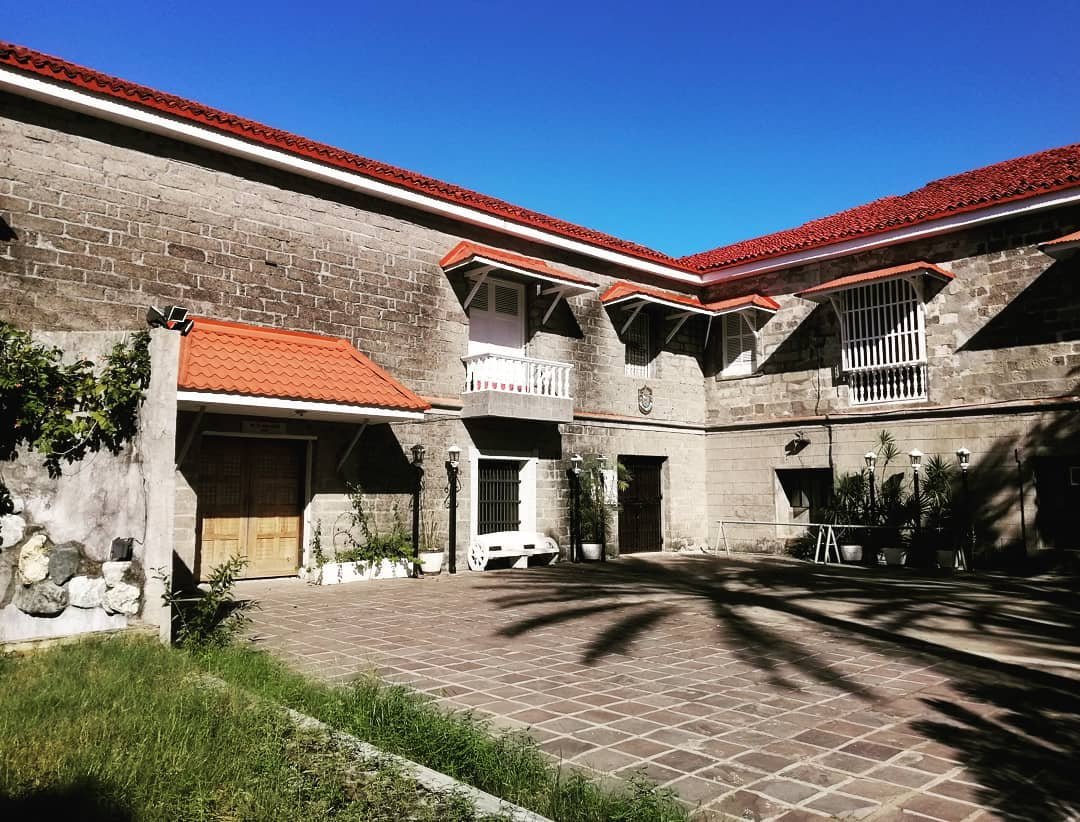
Nearby Attractions and Experiences
Discovering Malolos Beyond Barasoain Church
A visit to Barasoain Church Malolos Bulacan is often just the beginning of a deeper dive into the city’s layered colonial and revolutionary history. Within a 1 to 2-kilometer radius of the church are several heritage sites and culinary stops that offer a richer understanding of Malolos’ role in Philippine nationhood. Whether you’re on a quick morning visit or a full-day cultural excursion, these nearby attractions and experiences make the trip worthwhile.
Recommended Historical Sites Near Barasoain Church
Casa Real Shrine
Just a short walk (about 100 meters) from Barasoain, Casa Real Shrine once served as the printing press for El Heraldo de la Revolución, the official newspaper of the First Philippine Republic. Today, it is a small but well-curated museum focusing on the political history of the Philippines, particularly during the Malolos Congress. Entry costs around ₱30. Don’t miss the restored interiors and photos of key revolutionary figures.
Local Tip: Casa Real is best visited early in the day before field trip groups arrive. It complements the Barasoain Church and Museum perfectly, offering a broader context of the 1898–1899 revolution.
Malolos Cathedral (Basilica Minore de Immaculada Concepción)
Roughly 1.5 kilometers from Barasoain, Malolos Cathedral is not just an architectural gem—it was also used by General Emilio Aguinaldo as his official headquarters during the revolution. The Kalayaan Tree in its courtyard is where secret meetings were held. The cathedral is accessible via tricycle or a 15-minute walk through the old town.
Why it matters: It’s a great spot for those interested in religious heritage and the overlap of ecclesiastical spaces with revolutionary history.
Heritage Ancestral Houses – Kamestisuhan District
Located along the same route from Barasoain to the cathedral, the Kamestisuhan District is lined with ancestral houses that date back to the Spanish and early American colonial periods. These homes once belonged to influential Filipino families, some of whom hosted revolutionaries or supported the Katipunan movement.
What to look for:
Bautista House: Known for its period interiors and ties to Jose Rizal’s literary translations.
Alberto Mansion: Believed to have been owned by Teodora Alonso’s family (Rizal’s mother).
Travel Hack: Visit around 10:00 AM when house museums usually open, and bring small cash donations or fees (₱20–₱50) for access. Some homes may be closed on Mondays or require appointments—ask locals or the Malolos Tourism Office for guidance.
Suggested Walking Route and Itinerary
For a half-day heritage walk, here’s a practical and rewarding itinerary:
Start at Barasoain Church and Museum (8:00–9:30 AM)
Walk to Casa Real Shrine (5–10 minutes on foot)
Continue through the Kamestisuhan District, stopping by open ancestral houses (9:45–10:30 AM)
Ride a tricycle to Malolos Cathedral for a brief tour and photo opportunity (10:45–11:15 AM)
End with lunch at a nearby local eatery or café (11:30 AM onward)
Pro Tip: Wear comfortable walking shoes, bring water, and avoid midday visits during the hot summer months (March to May).
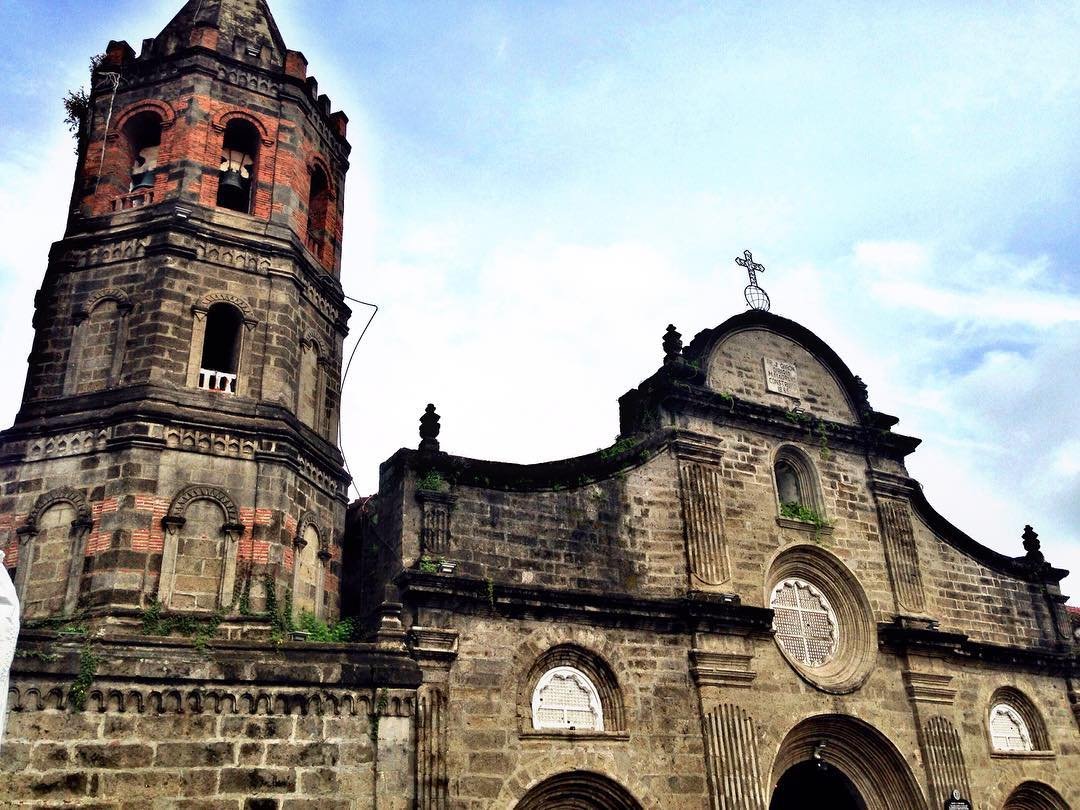
Where to Eat Near Barasoain Church
Bistro Maloleño – A Heritage Culinary Experience
For a true taste of traditional Bulacan cuisine, Bistro Maloleño is unmatched. Located just a few minutes’ drive from Barasoain Church, this charming restaurant is known for reviving historical Filipino recipes—some said to be favorites of revolutionaries and former presidents.
Must-try dishes:
Nilongganisa (Bulacan garlic sausage)
Ensaladang Pako (fern salad with salted egg)
Adobong Dilaw (yellow turmeric adobo)
Inipit and Ensaymada de Malolos for dessert
Personal Insight: Dining at Bistro Maloleño feels like stepping into a time capsule. The walls are decorated with sepia-toned photos, antiques, and old newspaper clippings—making it feel like an extension of the Barasoain Church and Museum experience.
Travel Tip: The restaurant gets busy on weekends and during holidays, so consider calling ahead or visiting on a weekday for a relaxed meal. Budget around ₱300–₱500 per person.
Citang’s Eatery – The Go-To Spot for Local Snacks
No visit to Malolos is complete without sampling local kakanin (rice cakes), and Citang’s Eatery is the community favorite. Located near Sta. Isabel (about a 5-minute tricycle ride from the church), it’s famous for:
Sapin-sapin (layered sticky rice cake)
Kutsinta (brown sugar rice cake)
Palitaw and Bibingka
Best Time to Visit: Early morning or mid-afternoon when fresh batches are out of the steamer. Great for take-home pasalubong (souvenir snacks).
Café Options for Light Bites and Coffee
If you’re looking to cool down or take a break between heritage stops, try these nearby cafés:
BaristaBrew Café
Located just across or in front of Barasoain Church, this local café serves espresso drinks, frappes, pasta, and sandwiches. It’s a popular hangout for students and pilgrims alike.
Café Congreso
A newer addition to Malolos’ café scene, this spot offers local coffee blends and all-day Filipino breakfast options. The ambience is laid-back, with air conditioning and good Wi-Fi—perfect for digital nomads or casual meetings.
Final Thought: A trip to Barasoain Church becomes even more enriching when paired with nearby historical landmarks and authentic Bulakenyo cuisine. By walking its heritage streets and savoring dishes passed down through generations, visitors experience the spirit of Malolos not just in stone and stories—but in every step and every bite.
Best Time to Visit Barasoain Church
Seasonal and Practical Considerations
Barasoain Church welcomes visitors year-round, but choosing the best time to visit Barasoain Church can make a big difference in your overall experience—especially when considering weather, crowd levels, and special cultural events.
Ideal Weather Conditions
Located in Central Luzon, Barasoain Church Malolos Bulacan experiences a typical tropical climate. The dry season runs from November to May, offering the most pleasant conditions for both sightseeing and walking around heritage spots nearby.
December to February is the most comfortable period, with cooler temperatures and clearer skies—ideal for taking stunning Barasoain Church photos without the discomfort of heat or sudden downpours.
The rainy season spans from June to October, with occasional typhoons. During this time, heavy rainfall may affect travel plans and even cause minor flooding in low-lying areas of Malolos. It’s not the best time to walk around the Kamestisuhan District or visit the museum if you’re aiming for uninterrupted views.
Local Tip: Bring an umbrella no matter the season. Even during the dry months, the Philippine heat can be intense by midday.
Special Event Highlight: January 23 – Araw ng Republikang Filipino
The most important date on Barasoain Church’s calendar is January 23, which commemorates the anniversary of the First Philippine Republic, inaugurated in 1899 within these very walls.
On this day, visitors can witness:
Flag-raising ceremonies
Civic parades and wreath-laying
Reenactments of the Malolos Congress and Aguinaldo’s presidential inauguration
Cultural presentations and special Masses
It’s a must-experience event for anyone interested in Philippine history. However, expect heavy crowds and road closures around Barasoain Church and Museum during the morning. If you’re planning to visit on this date, arrive before 7:00 AM and stay after the ceremonies to explore more peacefully in the afternoon.
Local Tips and Cultural Etiquette
Respecting Sacred Space
As you step into Our Lady of Mount Carmel Parish, remember that you’re entering not just a historical site, but an active house of worship. Observing proper etiquette ensures a meaningful and respectful visit.
Dress Modestly
Visitors should wear clothing appropriate for a church setting:
No sleeveless shirts, short shorts, or revealing outfits
Light, breathable clothing is recommended due to the tropical heat
Bring a scarf or shawl if wearing sleeveless tops
Observe Quiet Behavior
Whether you’re attending a mass or simply exploring:
Speak in hushed tones
Put mobile devices on silent
Avoid taking calls or video chats inside
Travel Hack: If a mass is ongoing and you’d prefer to wait, the Barasoain Church Museum is often open and makes for a good first stop before entering the sanctuary.
Participating in Local Religious Practices
Filipinos take church rituals seriously. Participating—or at least respectfully observing—makes your visit more immersive.
Lighting Candles
You’ll find designated areas for lighting candles, often on the church’s side courtyard
Candles are sold for a few pesos from local vendors; offerings are placed in nearby donation boxes
Lighting a candle is a common way to offer prayers or intentions
Genuflect or Bow
It’s customary to bow or genuflect when passing the altar or entering a pew
Even if you’re not Catholic, a respectful nod or moment of silence is appreciated
Joining the Mass
Tourists are welcome to attend Mass services. You don’t need to be Catholic to sit in quietly and observe. Just avoid taking photos, moving around, or interrupting the liturgy.
Final Thought:
Barasoain Church is best experienced when you let history and spirituality come together. Whether you’re walking through centuries-old pews during a quiet weekday morning, or joining hundreds in celebrating the birth of the First Philippine Republic, each moment here carries weight. With the right timing, proper respect, and a curious heart, your visit can be both deeply reflective and culturally enriching.
Travel Safety and Accessibility at Barasoain Church
Staying Safe During Your Visit
Barasoain Church and its surrounding areas in Malolos are generally considered safe for tourists. However, as with any popular public destination, a few safety precautions can go a long way in ensuring a smooth and worry-free trip:
Watch your belongings: Petty theft is uncommon in the church area, but always keep valuables secure, especially in crowded areas like jeepney terminals or public markets.
Use designated transport: Stick to registered tricycles or transport apps when commuting within the city. Avoid accepting unsolicited rides.
Stay hydrated: Especially during the hot summer months, bring bottled water and wear light, breathable clothing.
Check the weather forecast: During the rainy season (June to October), sudden downpours and occasional flooding can affect roads around Barasoain Church Malolos Bulacan. Bring a foldable umbrella just in case.
Accessibility Tips for Visitors with Disabilities and Seniors
While Barasoain Church is welcoming to all, its 19th-century architecture presents some accessibility limitations:
Church Access: The main entrance has several stone steps. While there is no permanent ramp, visitors with mobility issues can request assistance from staff or companions. Inside, the flooring is even and manageable for most seniors.
Museum Access: The Barasoain Church and Museum is housed in a two-story convent. Unfortunately, the second-floor exhibits are accessible only by stairs. If you’re traveling with elderly or differently-abled guests, focus on the accessible ground floor or ask staff if an alternative viewing (e.g., printed guide or summary tour) is available.
Pro Tip: Visit during weekdays when foot traffic is lighter, allowing more time and space to navigate comfortably.
Emergency Numbers and Nearby Medical Facilities
In case of emergency, here are essential contact points:
Philippine Emergency Hotline: Dial 117 or 911
Malolos City Police Station: +63 (44) 662-0494
Nearest Hospital:
Bulacan Medical Center – just 10 minutes away by tricycle or car
Contact: +63 (44) 662-2885
Pharmacies: Several are located near Malolos Crossing and Paseo del Congreso. Ask a tricycle driver or church staff for the nearest one.
Contact Details and Further Resources
Planning ahead or need help during your visit? Here are the official Barasoain Church contact details:
Parish Office Phone: +63 (44) 794-4340
Mobile Contact: +63 968 852 0344
Parish Email: contact@barasoainchurch.org
Museum Email: barasoainmuseum@gmail.com
Address: Paseo del Congreso, Barangay San Gabriel, Malolos City, Bulacan, 3000
Facebook Page: Our Lady of Mount Carmel Parish – Barasoain Church
This is the most actively updated platform for Barasoain Church mass schedule 2025, live streams, and announcements.
Recommended Further Reading
For those who want to explore more of the history of Barasoain Church, consider the following:
NHCP brochures and publications available at the on-site museum
Philippine History by Teodoro Agoncillo – sections on the Malolos Congress
Online articles and archives on the First Philippine Republic and the Malolos Constitution
These resources provide deeper insights into why Barasoain Church is a historical place, making your visit all the more meaningful.
Conclusion: Reflecting on Your Visit to Barasoain Church
Visiting Barasoain Church is far more than a sightseeing stop—it’s a personal journey into the soul of Filipino identity. As you sit beneath the towering arches or wander through the modest but powerful museum, you’re walking the same ground as revolutionaries who dared to dream of independence.
Whether you come to reflect, to learn, or to marvel, you’ll leave with a deeper appreciation for this landmark’s place in Philippine history.
Share your experience. Take photos, write about your visit, or even light a candle for a personal intention. Every visit helps keep the story of Barasoain alive—not just for tourists, but for generations of Filipinos who continue to draw inspiration from it.
Call to Action:
If this guide inspired your visit, consider exploring more of Malolos and Bulacan’s heritage sites—from the ancestral homes in the Kamestisuhan District to the peaceful grounds of Malolos Cathedral. Each site builds upon the story started at Barasoain Church, making your trip a full-circle experience in faith, history, and national pride.

